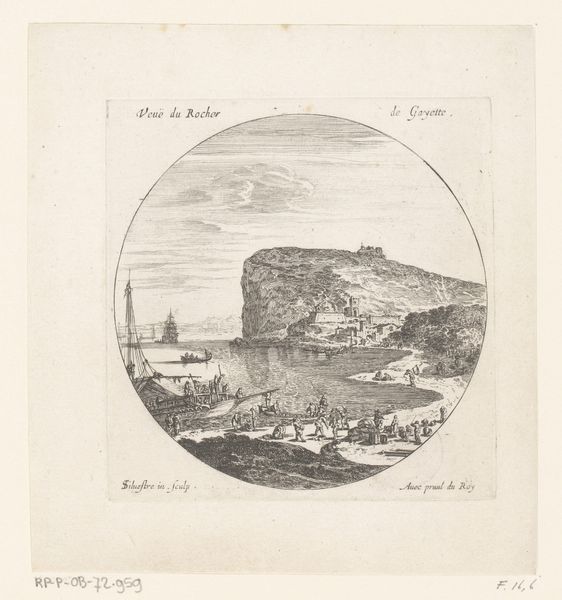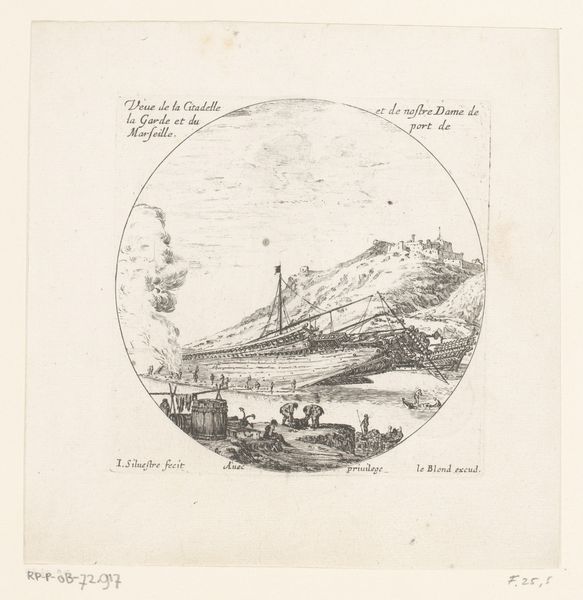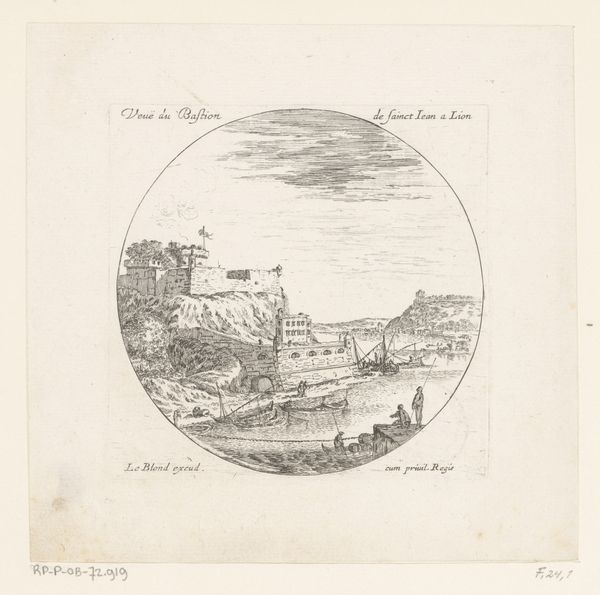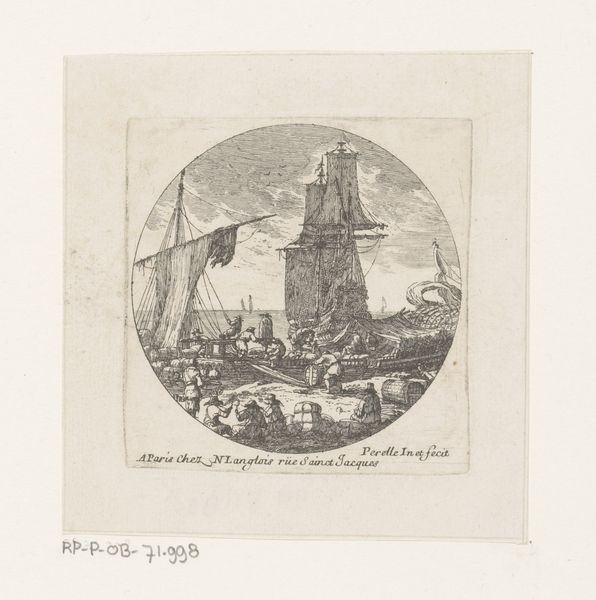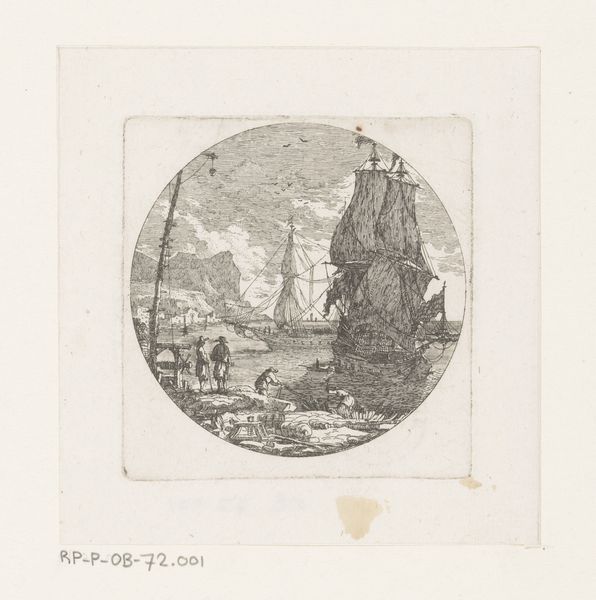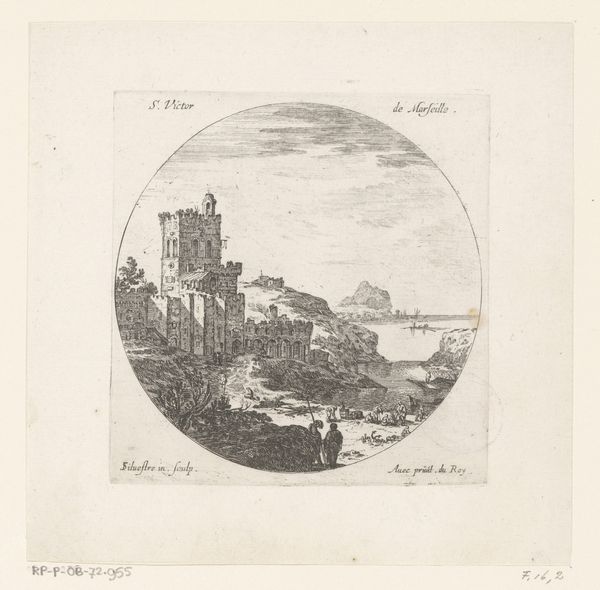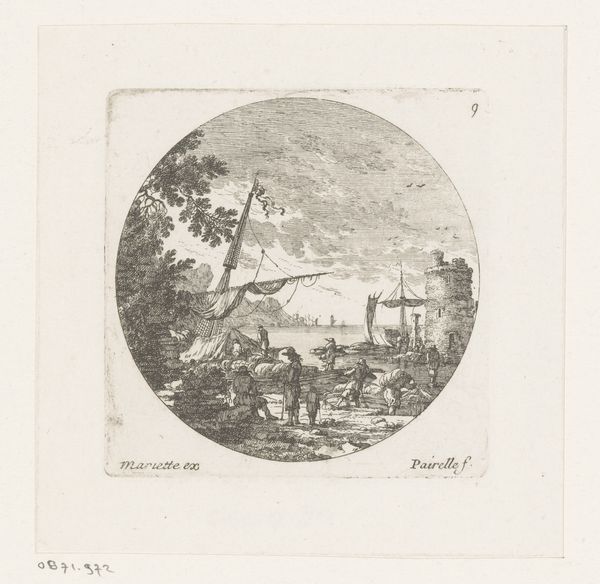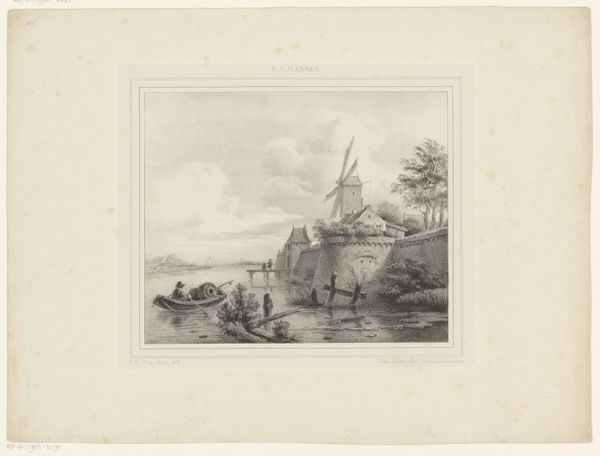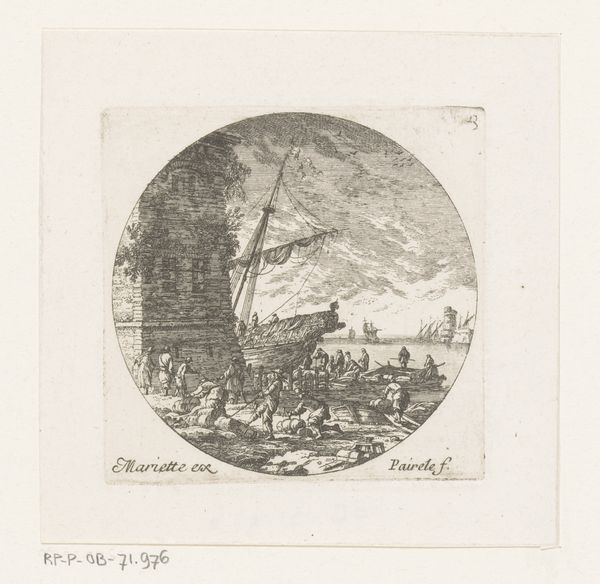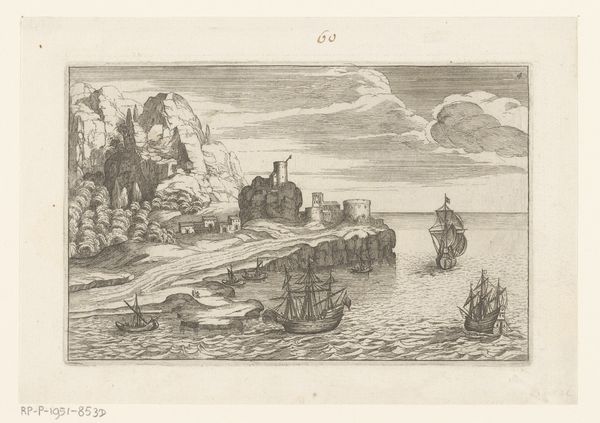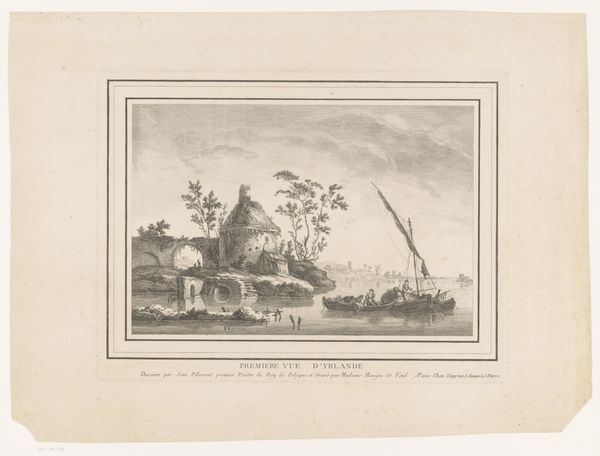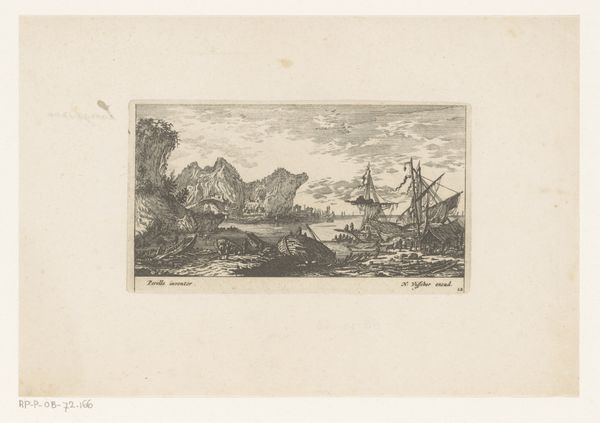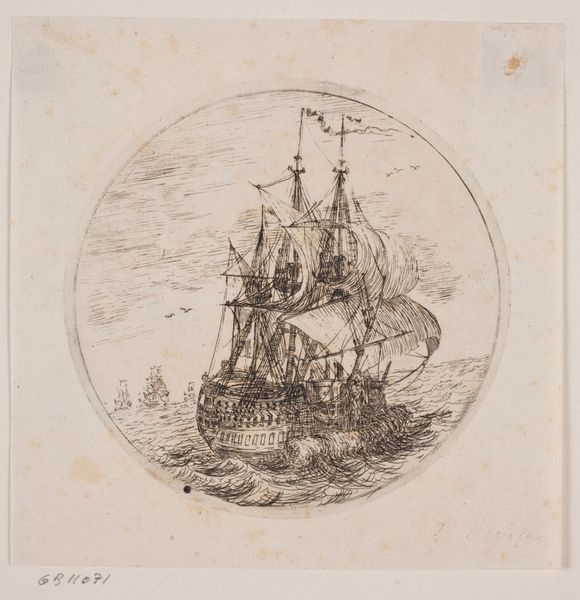
print, engraving
#
baroque
# print
#
landscape
#
cityscape
#
engraving
Dimensions: height 117 mm, width 120 mm
Copyright: Rijks Museum: Open Domain
Curator: This print, "Gezicht op de Vesuvius" by Israel Silvestre, probably made sometime between 1645 and 1691, renders the volcano as both majestic and ominous, especially with that cloud billowing above. Editor: It's incredibly detailed for an engraving. There's almost a sense of quiet, even though it's depicting something as potentially violent as Vesuvius. What stories do you think an image like this tries to capture, or is it pure landscape? Curator: It goes much deeper. Vesuvius was a potent symbol of nature's power, of course. Think about what volcanoes represented historically—destruction, chaos, but also rebirth and transformation. Silvestre's image likely served as a memento, connecting viewers with classical ideas of the sublime and picturesque but I think more about how trauma is negotiated through symbol. Is it a detached observation, or a reckoning with disaster, rendered beautiful? Editor: I hadn't considered the element of "disaster tourism" even back then. Was there perhaps a voyeuristic aspect to depicting something so dangerous in a palatable, artistic form? Curator: Perhaps. These kinds of landscape images created an aesthetic language, a way to process dramatic, often terrifying events and transform them into consumable, collectible images. The mountain looms, yet the everyday carries on at its base. Consider, what kind of power dynamics are at play here, and for whom was this image crafted? Editor: I never really thought about landscape having such a loaded symbolic history. Curator: Exactly! It invites us to see how visual symbols have changed, and what emotional and psychological connections continue to resonate today. Editor: Thanks, that gives me a lot to think about, looking beyond the surface!
Comments
No comments
Be the first to comment and join the conversation on the ultimate creative platform.
